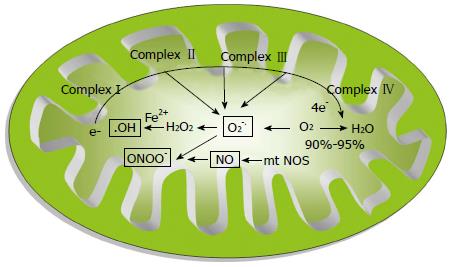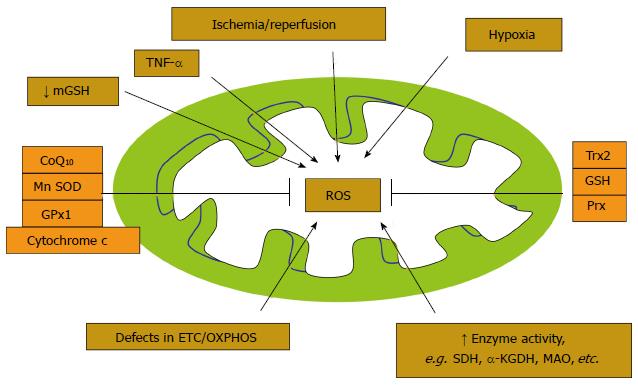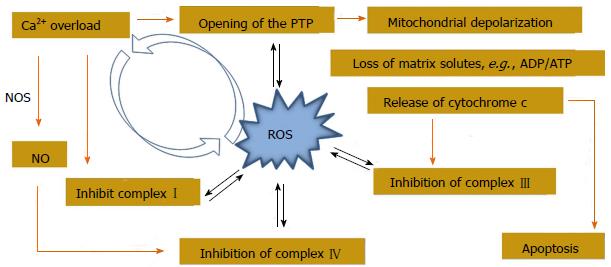Copyright
©2014 Baishideng Publishing Group Inc.
World J Cardiol. Oct 26, 2014; 6(10): 1091-1099
Published online Oct 26, 2014. doi: 10.4330/wjc.v6.i10.1091
Published online Oct 26, 2014. doi: 10.4330/wjc.v6.i10.1091
Figure 1 Formation of various reactive oxygen species in mitochondria.
HO.: Hydroxyl radical; O2.-: Super oxide anion radical; ONOO-: Peroxynitrite; mtNOS: Mitochondrial-specific nitric oxide synthase; NO: Nitric oxide.
Figure 2 Factors that form and attenuate (antioxidants) reactive oxygen species in mitochondria.
SDH: Succinate dehydrogenase; αKGDH: Alpha ketoglutarate dehydrogenase; MAO: Monoamine oxidase; Trx: Thioredoxins; Prx: Peroxiredoxin; OXPHOS: Oxidative phosphorylations; TNF-α: Tumor necrosis factor-alpha; GSH: Reduced glutathione; MnSOD: Manganese containing superoxide dismutase; GPx1: Glutathione peroxidase; CoQ10: Co-enzyme Q10.
Figure 3 Damage induced by reactive oxygen species in mitochondria.
OXPHOS: Oxidative phosphorylations; ROS: Reactive oxygen species.
Figure 4 Crosstalk between mitochondrial Ca2+ handling and reactive oxygen species generation.
PTP: Permeability transition pore; NOS: Nitric oxide synthase; ADP: Adenosine diphosphate; ATP: Adenosine triphosphate.
Figure 5 Myocardial infarction-induced mitochondrial damage and dysfunction that resulted in heart failure.
- Citation: Ajith TA, Jayakumar TG. Mitochondria-targeted agents: Future perspectives of mitochondrial pharmaceutics in cardiovascular diseases. World J Cardiol 2014; 6(10): 1091-1099
- URL: https://www.wjgnet.com/1949-8462/full/v6/i10/1091.htm
- DOI: https://dx.doi.org/10.4330/wjc.v6.i10.1091













